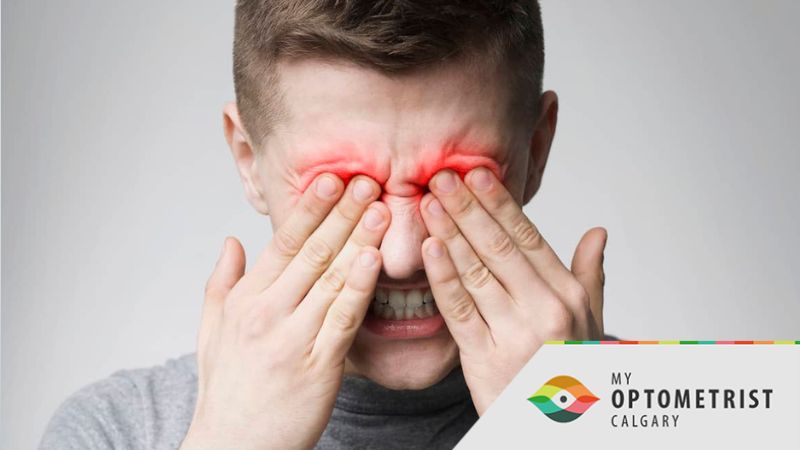
The eyes are intricate parts of the body with various components in them. Two of these components are the retina and the vitreous fluid. Both of these are vital to the function of the eye and it is possible for each of them to detach. A retinal detachment and a vitreous detachment are two different eye conditions that vary in severity, yet the two of them are related. A vitreous detachment is more common than a retinal detachment, although one can potentially trigger the other. Here is what you need to know about vitreous detachment and how it can relate to retinal detachment.
Vitreous Detachment And Retinal Detachment
What Is Retinal Detachment?
The retina is an area at the back of your eye that is responsible for turning light into vision. Light focuses through various components of the eye so that it concentrates on the retina. From there, the cells in the retina transmit this information to the brain so that vision can occur. Retinal detachment is a serious eye emergency where the retina either partially or fully pulls away from the back of the eye end detaches. When this happens, the retina becomes separated from its source of blood and oxygen and if it’s not reattached the retina can die. If this occurs, vision is permanently lost in that eye. Retinal detachment can occur over the course of a few days or several weeks and this eye emergency requires immediate attention. If your retina has detached, you may experience a large number of floaters at once, which are small dots or squiggly lines that move across your vision. Retinal detachment can also cause flashes of light in your vision, blurred vision, reduced peripheral vision, or a curtain-like shadow across your field of vision.
If you experience any of the listed symptoms of a retinal detachment, you may be experiencing an eye emergency and you should receive emergency eye services right away.
What Is Vitreous Detachment?
The vitreous is the liquid-like substance that is in about 75% of the eye to keep the eye adequately inflated and properly shaped. This semi-solid liquid is contained in a sac connected to the retina. It is possible for this sac to detach from the retina, which is known as vitreous detachment or posterior vitreous detachment (PVD). This condition typically occurs in people 50 years old and older and vitreous detachment on its own often doesn’t cause permanent vision damage. Sometimes people with vitreous detachment won’t experience any symptoms and the condition will only be detected during an eye exam. Other times, symptoms can present, including floaters in the vision and flashes of light.
How Are Vitreous Detachment And Retinal Detachment Related?
When the vitreous detaches, it can sometimes pull with excessive force and create a hole or retinal tear. This hole or tear can then cause retinal detachment. It is the relationship between vitreous detachment and retinal detachment that makes vitreous detachment potentially dangerous. On its own, this issue is non-threatening and may not even require treatment, but when it causes a hole it can lead to retinal detachment and subsequent permanent vision loss.
Get Checked For Vitreous Detachment During And Eye Exam
Sometimes a person will not realize they have vitreous detachment and the only way to know is by scheduling an eye exam. Your eye doctor will be able to look at your eye to check the health of your eye and ensure that everything is in place. To check for vitreous detachment and other eye conditions, visit My Optometrist in Calgary or Three Hills. Our staff will conduct a comprehensive eye exam that examines your eye health and your vision. To book an eye exam with one of our eye doctors, contact My Optometrist at one of our three locations at Health First in SE Calgary, Sunridge in NE Calgary, or Three Hills, AB. You can also call us or fill out the online contact form.
FAQ
Q: What should I expect during my eye exam?
A: Typically, your doctor will begin by reviewing your personal and family health history to see if there are any hereditary problems of eye disease, vision loss, high blood pressure, cancer, etc. Then your doctor will begin conducting vision tests, coordination of eye muscles, peripheral vision, pupil response, colour testing, eyelid health and function, and measurement of fluid pressure in the eye to detect glaucoma.
Q: Are floaters only caused by retinal detachment?
A: No, floaters can be caused by various eye conditions and they can also be benign. A few floaters here and there are often not cause for concern, but several at once can be an indication that something is wrong. To learn more about floaters, read What Are Floaters And What Will An Eye Doctor Look For?
Q: What is the function of the vitreous fluid in the eye?
A: Vitreous fluid maintains the shape of the eye, helps the retina stay attached, can help with vision clarity, and offers cushioning for the other components of the eye if there is impact to the head.